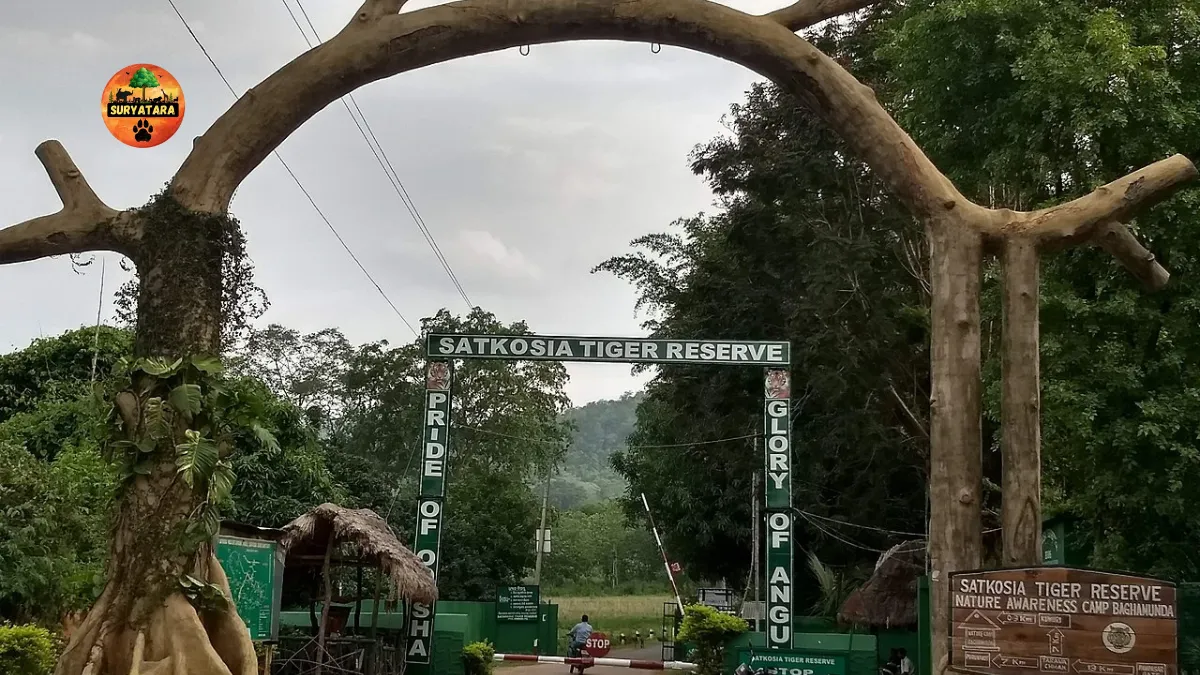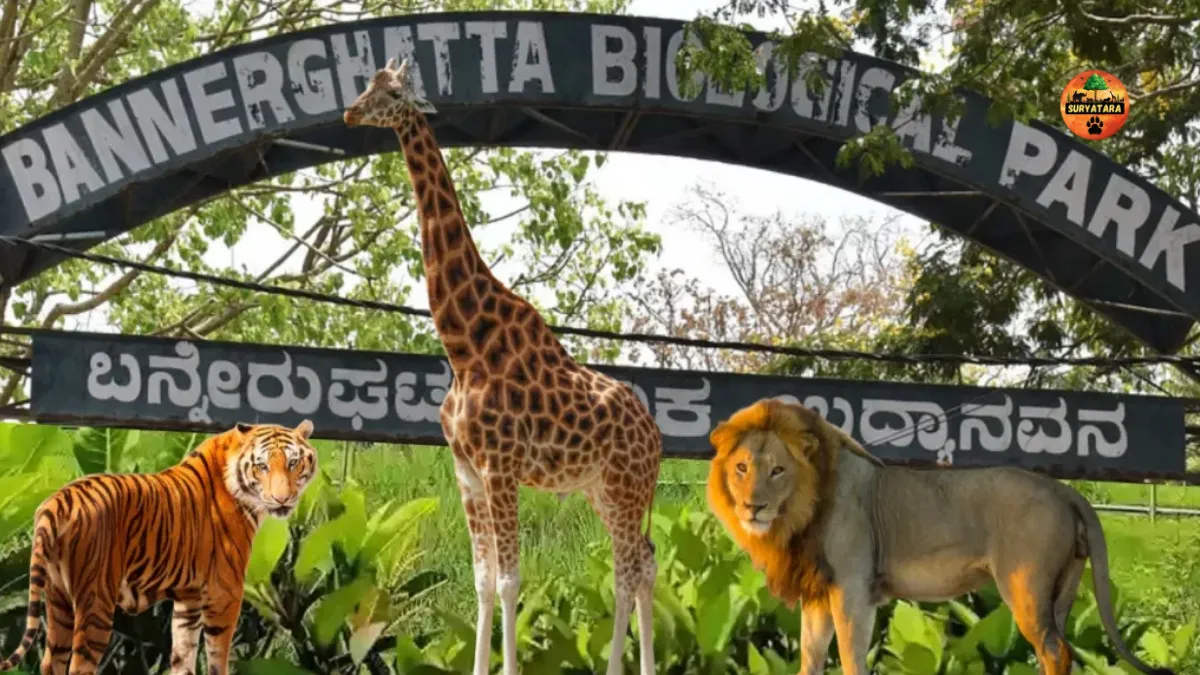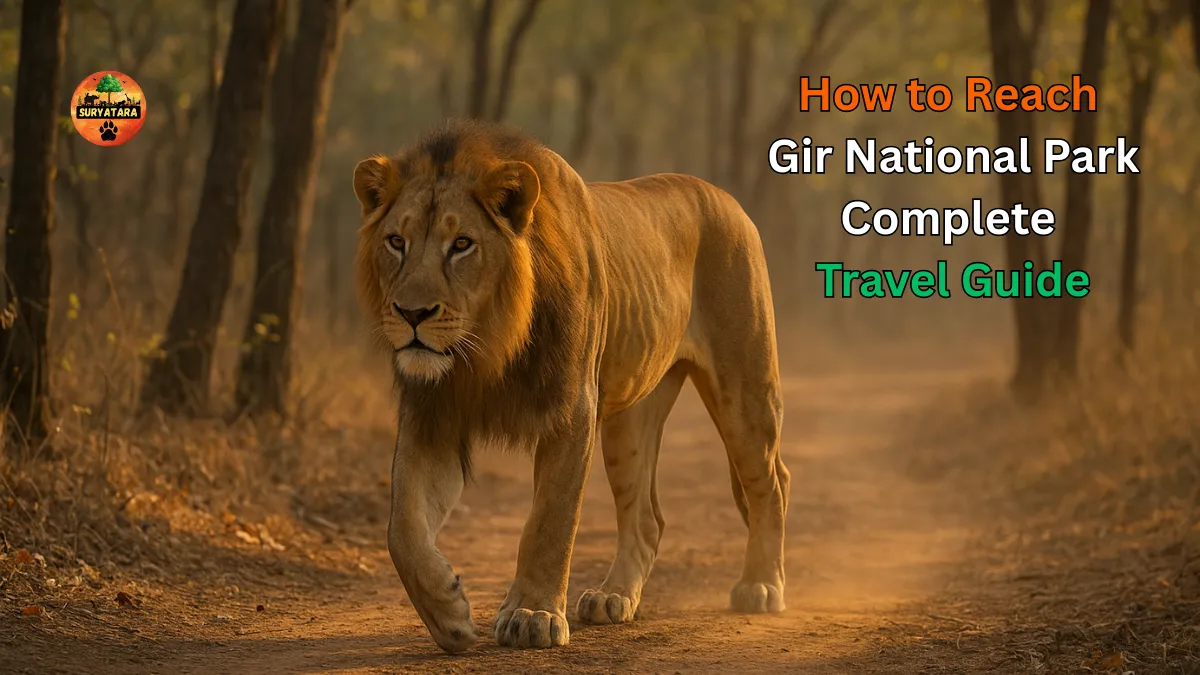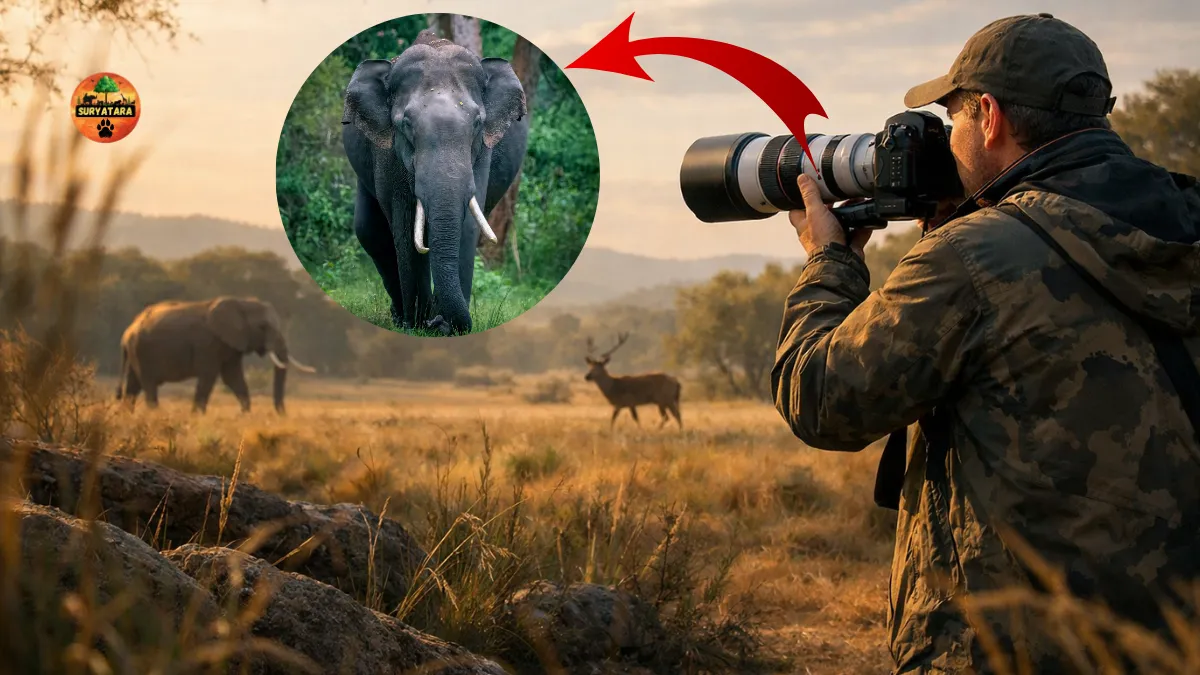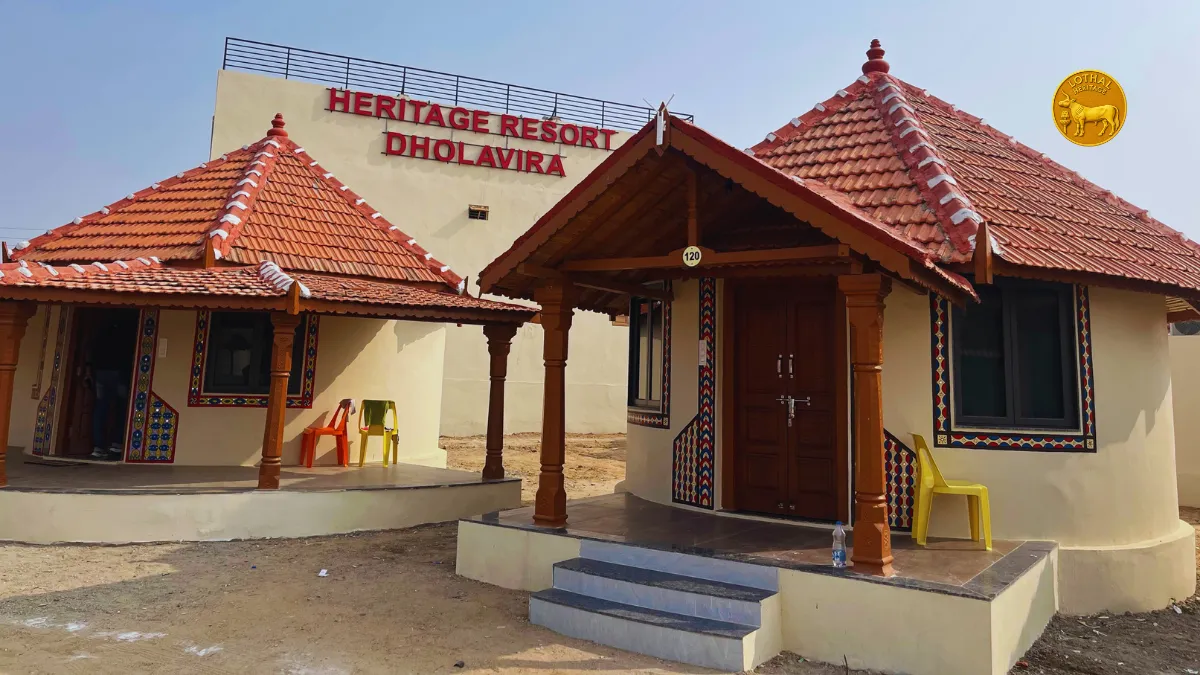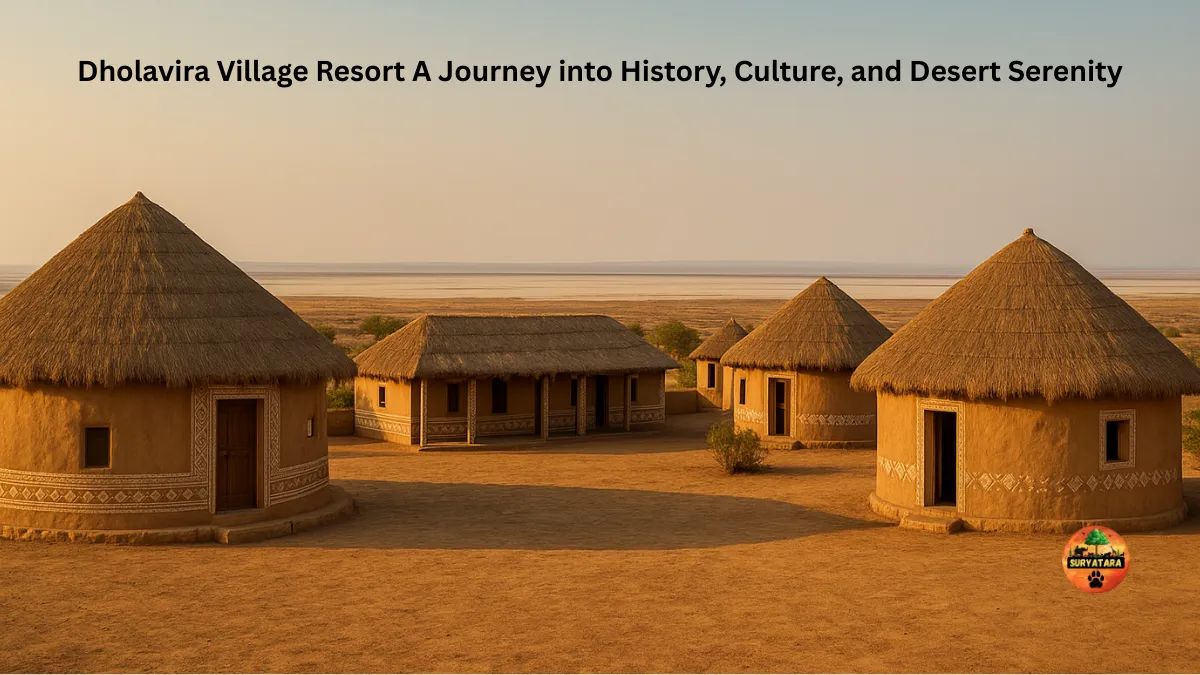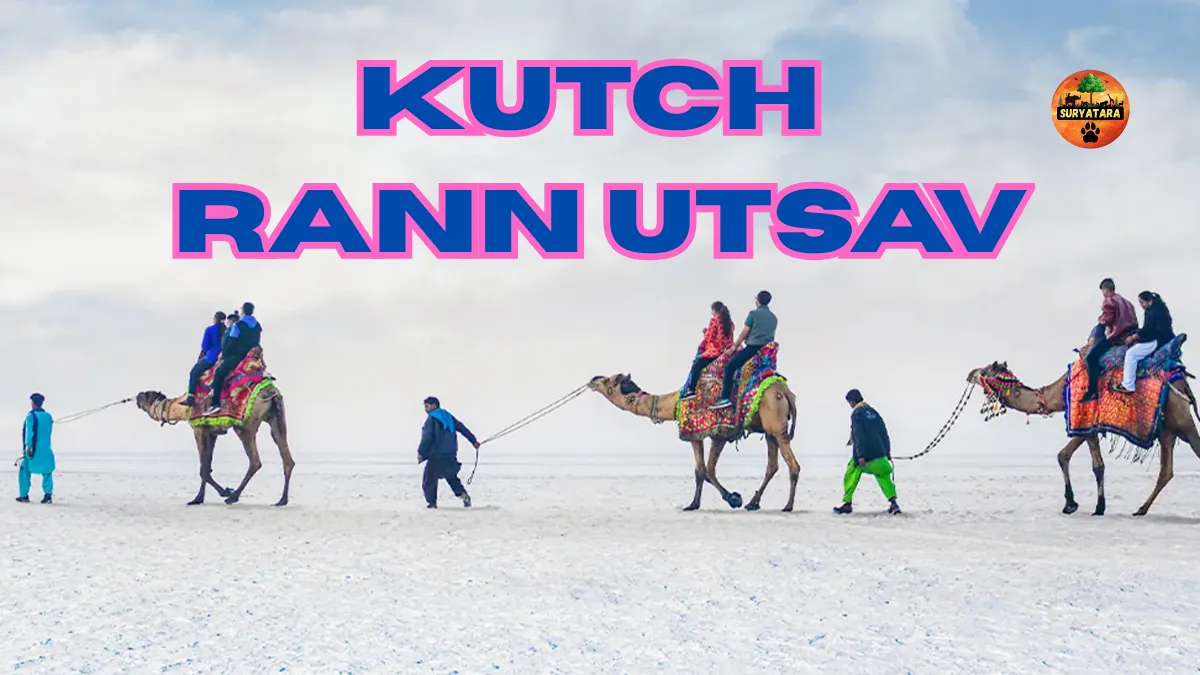Satkosia Tiger Reserve is one of India’s lesser-known but ecologically significant tiger habitats, located in the eastern state of Odisha. Nestled in the Eastern Ghats, this pristine sanctuary offers an incredible blend of scenic beauty, rich wildlife, and a thriving ecosystem. If you are a nature lover, wildlife enthusiast, or conservation supporter, Satkosia is a destination that deserves your attention and admiration.

Overview of Satkosia Tiger Reserve
Satkosia Tiger Reserve was established in 2007 by merging the Satkosia Gorge Wildlife Sanctuary and the Baisipalli Wildlife Sanctuary. Spread across four districts—Angul, Cuttack, Nayagarh, and Boudh—the reserve covers an area of 963.87 square kilometers. It is named after the Satkosia Gorge, a majestic 22 km long canyon carved by the River Mahanadi.
This tiger reserve plays a crucial role in preserving the dwindling forests of Odisha and acts as a vital corridor for species migration in the Eastern Ghats landscape.
Key Details of Satkosia Tiger Reserve
| Attribute | Description |
|---|---|
| Location | Angul, Cuttack, Nayagarh, and Boudh districts, Odisha, India |
| Total Area | 963.87 sq. km |
| Core Area | 523.61 sq. km |
| Buffer Area | 440.26 sq. km |
| Established | 2007 (as a Tiger Reserve) |
| Primary River | Mahanadi River |
| Major Wildlife Species | Tiger, Leopard, Elephant, Gaur, Mugger Crocodile, Indian Python |
| Best Time to Visit | November to May |
| Nearest Town | Angul (approx. 40 km) |
| Nearest Airport | Biju Patnaik International Airport, Bhubaneswar (approx. 150 km) |
Biodiversity Richness of Satkosia Tiger Reserve
One of the most impressive aspects of Satkosia Tiger Reserve is its exceptional biodiversity. The reserve supports moist deciduous and dry deciduous forest types, which are home to a wide variety of flora and fauna.
From apex predators like tigers and leopards to gentle giants like Asian elephants, Satkosia offers a safe haven to many endangered and vulnerable species. The Mahanadi River, which flows through the reserve, also nurtures aquatic species such as the mugger crocodile, gharial, turtles, and numerous fish species.
The avian diversity here is also noteworthy, making Satkosia a paradise for bird watchers. You can spot species like the Indian pitta, changeable hawk-eagle, crested serpent eagle, kingfishers, and hornbills.
Tiger Conservation at Satkosia
Though Satkosia Tiger Reserve was designated as a tiger reserve in 2007, its wild tiger population faced a steep decline in the following years. In an effort to revive the tiger numbers, the National Tiger Conservation Authority (NTCA) and the Odisha Forest Department initiated India’s first inter-state tiger relocation project in 2018.
A male tiger from Madhya Pradesh was released into Satkosia as part of this project. However, the program faced challenges due to territorial conflicts and lack of acclimatization, leading to its temporary halt. Despite setbacks, Satkosia continues to be a significant site in India’s tiger conservation narrative.
Efforts are ongoing to strengthen habitat management, improve prey base, and engage local communities in conservation activities.
Ecotourism and Visitor Experience
Satkosia Tiger Reserve offers a rewarding experience for ecotourists and nature seekers. The forest department has developed several eco-cottages and nature camps, especially near Tikarpada, Chhotkei, and Purunakote. These accommodations are managed by local communities, ensuring sustainable tourism and economic benefits for villagers.
Activities include:
- Jungle safaris and guided nature walks
- Boating in the Mahanadi River
- Crocodile conservation education
- Birdwatching expeditions
The views of the Satkosia Gorge during sunrise and sunset are simply breathtaking. The silence of the forest, punctuated only by the calls of birds and rustling leaves, offers a deep sense of peace and connection with nature.
Importance of Community Involvement
Satkosia Tiger Reserve is a model for community-based conservation. Several forest-dependent villages lie within and around the reserve. The Odisha Forest Department works closely with local communities to balance livelihood needs with wildlife protection.
Initiatives include:
- Livelihood programs through eco-tourism
- Training locals as nature guides
- Promoting sustainable farming and fuel alternatives
- Wildlife monitoring with local volunteers
Such inclusive approaches not only strengthen conservation but also foster a sense of ownership and pride among local populations.
Also read: Jim Corbett National Park Ticket Price Chart with Safari Zone Details & Booking Tips
Challenges and the Road Ahead
Despite its ecological importance, Satkosia Tiger Reserve faces numerous challenges such as:
- Habitat fragmentation
- Human-wildlife conflicts
- Encroachment and resource pressure
- Limited tiger population and prey base
The path forward requires:
- Strengthening anti-poaching and patrolling
- Restoring degraded forest patches
- Scientific habitat and prey base improvement
- Transparent and community-inclusive conservation policy
If sustained efforts are made with long-term vision, Satkosia can emerge as a thriving landscape for tigers and other wildlife once again.
Also read: Sundarban Tiger Reserve: India’s Mysterious Mangrove Kingdom of the Royal Bengal Tiger
Conclusion
Satkosia Tiger Reserve is not just a tiger habitat—it’s a complete biodiversity landscape with rivers, forests, hills, and vibrant local culture. Though relatively less explored than some of India’s other tiger reserves, Satkosia holds immense ecological and tourism potential.
Whether you are a traveler seeking raw nature or a conservationist looking for real-world impact, Satkosia has something deeply meaningful to offer. With continued conservation commitment and community participation, this hidden jewel of Odisha can shine brightly in India’s wildlife heritage map.
